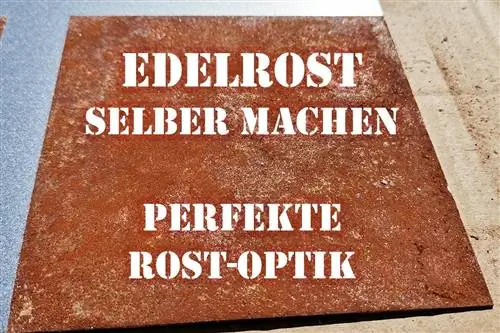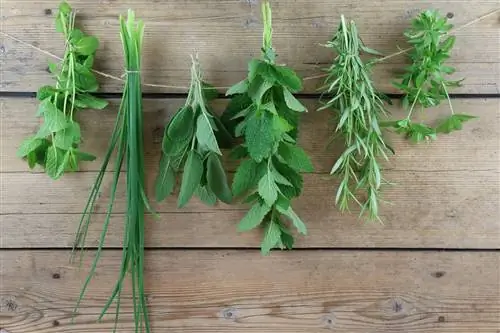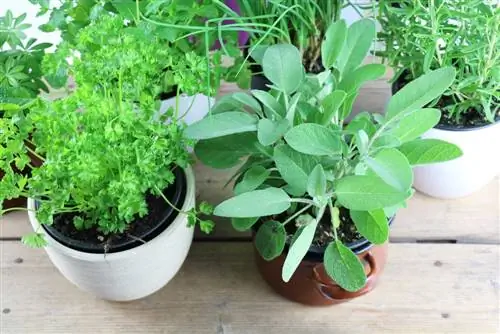- Author admin [email protected].
- Public 2024-01-31 11:14.
- Last modified 2025-06-01 06:48.
When things rust, it's actually time to replace them or get them back in shape somehow. However, with patina it is different, here metal is intentionally made to rust in order to intentionally get the perfect rust look.
What is patina?
While rust is an undesirable side effect of weather and time on metal, patina specifically encourages the workpiece to rust. A wide variety of patterns and drawings of the patina are created using various techniques and methods
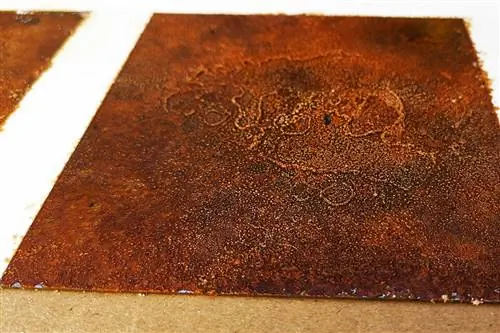
Decoration in metal look
When designing rooms with wood, it is popular to combine old wood and new, solid pieces of furniture. In this way you make a statement for the material 'wood'. This mix of materials can also be transferred to metal: old metal, whether with or without rust, can be combined with modern shelves and wall elements, for example to live out the industrial style in the home in an impressive way. Part of this mix can be metal plates that can be printed with photos. You don't have to do without metal for the photo wall and you can create a unique wall decoration.
The right material
When making your own patina, you want to let a surface rust “quickly” and not wait for nature to take its course. In order for this to work, a few things have to be taken into account.
Rusting only works with metals containing iron; other metals also react with air over time, but do not form the desired golden-brown patina. For example, copper will eventually develop verdigris and aluminum will develop white-grey aluminum rust.
Protective layer zinc
Since galvanizing is a very effective protective layer against rust, it is recommended to organize non-galvanized steel material directly.
Ungalvanized smooth steel sheet is particularly suitable,
- because it is very stable
- not quite as intensive in price
- because it rusts quickly and well
Tip:
Use a magnet to test whether the desired material also contains iron/is magnetic.
Remove galvanizing
Acetic acid can attack zinc and even remove the galvanizing. This is worthwhile if you want to give a tin can a rusty look.
With the appropriate protective equipment, you can also remove the protective galvanizing with swimming pool cleaner (with hydrochloride).
Tip:
If it is possible, you should leave the still galvanized metal piece in the respective acid overnight and then remove the rest of the galvanization the next day using gloves and abrasives (wire brush, waterproof sandpaper).
Instructions for patina
Since the production of patina always involves a bit of dirt, you should definitely protect the surface and not do without a base, because rust stains are difficult to remove.
The easy way
- Spray bottle
- Warm water
- S alt
- Rubber glove
- Safety glasses (optional)
You actually only need water and s alt for this. Standard table s alt, which is available in every supermarket and discount store, is sufficient.
Location
Working in a well-ventilated room or, better yet, outdoors has many advantages for the production of patina:
- less odor nuisance
- often easier to clean
- shorter drying times
- more effective chemical reaction (oxidation) ->it rusts faster
Step 1
Dissolve some s alt in water. Add s alt to the water by teaspoonfuls, stir and wait until it dissolves. Then fill the water-s alt solution into a spray bottle.
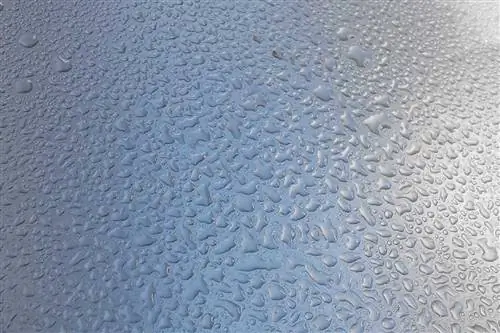
Step 2
Now a light spray mist is applied to the metal. In this case, less is more, the finer the droplets are, the better the s alt water can react with the subsoil and oxygen.
Tip:
The working environment should be cool so that the water does not evaporate immediately. The slower the process, the better the result.
The first brown discolorations appear after a short time. As soon as the surface is dry again, the next spray from the bottle follows.
Step 3: Don’t touch
Even if it is very tempting to want to touch the first rust achievements right away- NO - please be patient. These are very fragile initial results that can be removed immediately with a wipe.
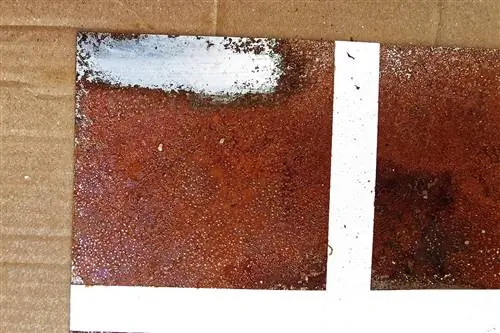
If you spray the plate diligently throughout the (afternoon) day, let it dry and spray again and then leave the plate outside overnight, you will get better results. The more time rust has to develop, the more perfect the rust look will be.
For those who are patient
Just leave the metal plate outside and the weather will conjure up an incomparable patina. Patina can be motivated a bit by letting some water run over the surface yourself (see The Easy-Way). But nature does most of the work for you here.
More home remedies
Acetic acid or vinegar essence with soda (alternatively, imperial baking soda) can also have a good rust-promoting effect. However, it is important to ensure that there is very good ventilation, as the constant smell of vinegar is not for everyone. You should also work with gloves and safety glasses here. The application and processing are carried out in the same way as with a s alt water solution.
Note:
Mix the two components very carefully, as it foams up very quickly and can also lead to strong heat development.
Pure Chemistry
Hydrochloric acid is also said to have a very good rust effect and, above all, can dissolve galvanizing very quickly. However, this is a fairly aggressive acid, which on the one hand is not that easy to obtain and on the other hand it requires some experience with chemicals when handling it.
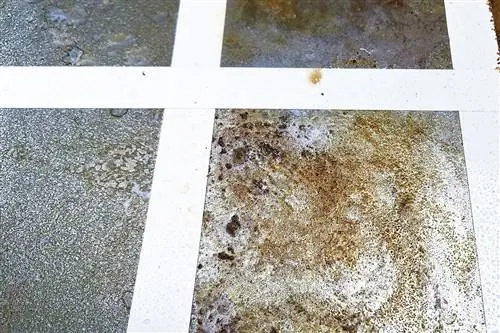
Editor's note:
We adviseexplicitlyagainst the use of hydrochloric acid, as its use isnot for laypeople. This is aDangerous Goodswhich represents apotential danger to he alth and the environment.
Spare yourself the shocked expression on the pharmacy staff's face when you ask. The pharmacies that are allowed to sell hydrochloric acid are very limited and difficult to find. However, they are only allowed to sell hydrochloric acid under very strict conditions.
Tip:
If you have a chemistry set or have friends in a chemistry lab, you can try your luck there.
Mechanical Techniques
In order to make patina yourself, you always need moisture and dryness so that the oxygen causes the metal to rust nicely. There are also different techniques for different patterns and rust looks.
Process surface beforehand
The surface can be roughened and thus enlarged using a wire brush, coarse or fine sandpaper. The more surface area the rust has to attack, the wilder it can develop. Here, patterns or even fonts can be incorporated into the material beforehand. With a graver or a flex, different delicate results can be achieved.
Apply correctly
Spraying
With a spray bottle you can work particularly conveniently, easily, quickly and cheaply. You should always rinse the bottles with clear water before long breaks to prevent the nozzle from becoming clogged.
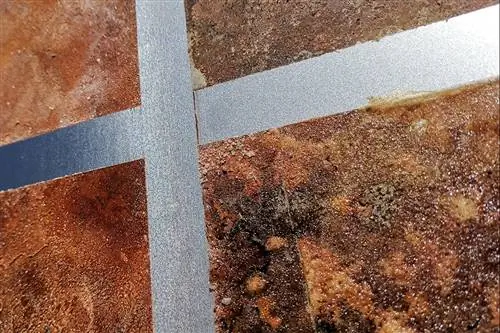
Diving
Here the workpiece is dipped into the appropriate liquid and then allowed to dry. Alternatively, you can let the liquids run over the surface. The result is beautiful gradients.
Sponge
Various patterns can be dabbed on with sponges. This technique is suitable if a good rusty base has already been created. Whether you use a natural sponge, a normal kitchen sponge or sponges prepared with scissors or strings is purely a matter of taste and so there is plenty of freedom for your own imagination.
Wiping / Sanding
If the appearance of the patina is too wild for you, you can carefully smooth the surface with a cloth or fine sandpaper. This results in a uniform, brighter surface.
Tip:
Before you want to make any changes to the grate, you should carefully test whether the patina is already solid and bonded to the surface or is still too loose.
Stop rusting
To stop the rust you have to take the air out of it. The surface can be refined and sealed, but you should always remember that as soon as air (oxygen) comes into contact with rust and metal, they will continue to rust.
Clearcoat
Clear varnish is suitable for interior use so you can seal the surface. However, you should always be careful where you store the workpiece. If the humidity is high, additional rust can occur.
Rust impregnation
A rust seal with a penetrating oil (OWATROL oil) is one way to temporarily stop the rusting process.
There are some advantages that this sealing brings:
- Rust no longer rubs off
- Surface can even be labeled
- there are no rust stains on the surface
The only disadvantage outdoors is that the sealing has to be renewed again and again in spring and autumn.
Epoxy resin
If the patina plate is to be used as a surface, it can also be sealed with epoxy resin (resin).
Tip:
Always keep an eye on patina rust products, because if the rust continues to work, the perfect rust look can quickly spread to the surface or the surrounding area.
Remove rust
If rust has formed in the wrong place or you want to intervene directly in the rust pattern, you can work with vinegar essence. This is often used to remove rust. You can often find instructions on how to make patina using vinegar essence and soda - but unfortunately we weren't convinced by the result.
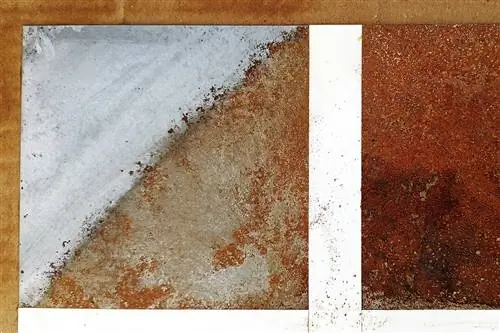
Rust stains
- “Rust is contagious” -
When making your own patina, you should never go without a suitable base. Make sure you wear appropriate work clothing and ensure appropriate storage, because rust stains a lot. Rust leaves stains that are not easy to remove. But rust can also “spread” to other rust-prone materials and all metal parts will bloom in a golden brown - whether you like it or not.
More appearance than reality
With a few tricks you can also give the appearance of patina. There are various options for making rust paint yourself:
- buy finished rust paint (rust look)
- Collect rust and mix with brown paint
- Make rust pigments yourself with steel wool (abrasive from a hardware store) and water

